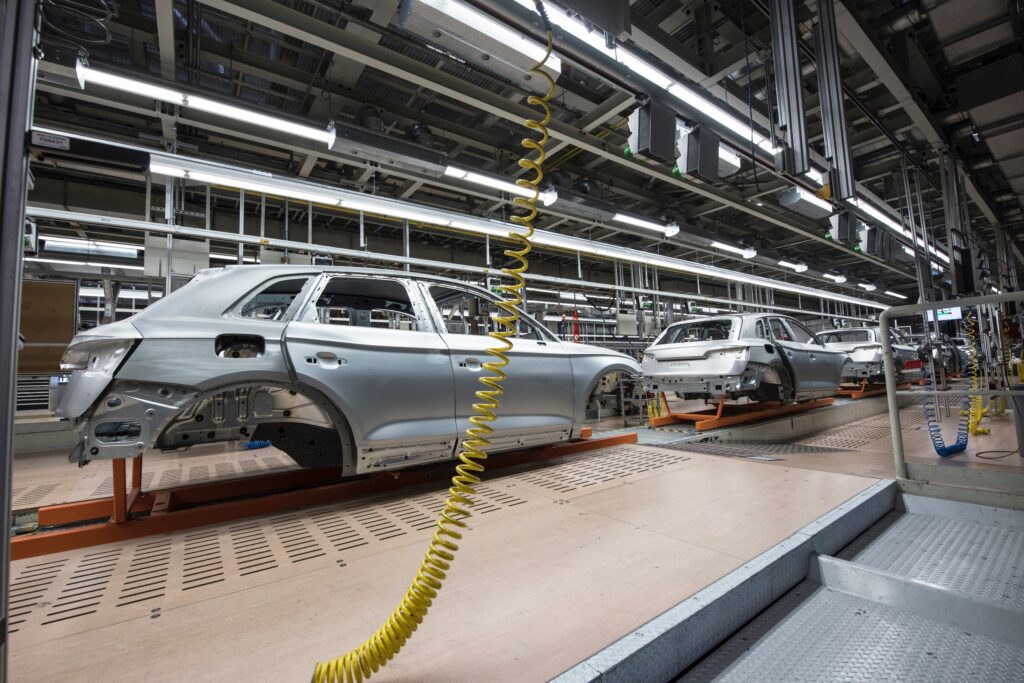What are the market predictions for wireless power technology designed for telecom, IoT & 5G?
The expanded bandwidth of 5G enables more IoT devices to work seamlessly in far smaller spaces. This improves the service for existing use-cases like regular mobile usage. And it enables the implementation of technologies like drone delivery, self-driving cars, and others that rely on sensors and communication across a distance.
Industry leaders like Steve Szabo from Verizon Business predict that 5G will enable peak data-transfer speeds of 10 gigabits per second. This is more than double the current top speeds of around four gigabits per second.
This increased bandwidth and throughput of 5G will be the foundation on which the smart city is built. This is because 5G makes it possible for cellular networks to service many more connected sensors per square mile. Szabo says that per square mile, “5G on mmWave technology is built to handle millions of connected sensors and in fact is capable of managing a million connected devices”.
5G’s high speeds open the way for edge computing. This enables devices like drones and smartphones to punch above their weight by intelligently sorting on-device computing from tasks that could be done with a cloud server.
The best small business video conferencing software integrates with the cloud technologies companies need to work effectively. Right now, this is limited to phones using APIs to connect with everything from CRM software to AI analytics. But with 5G-enabled edge computing, we could see the video call moving into AR glasses which work just as well at home as they do on the go.
With more people working in a more diverse range of environments–at home, in cafés, out in the country–more video calls online can and will be backed up with mobile data. (We’ve all heard about the potential dangers of joining public wifi networks. If you have fast, unlimited data, why take the risk?) Wider and denser 5G deployment makes this more economical through increased data plans and support for more devices per user.
And with more business communications becoming device-agnostic, with features like a free virtual phone number across desktop, tablet, or mobile, we’re seeing more connected devices per person than ever before.
Businesses can use these trends to further digitize their operations. For example, more sensors enable better e-commerce order management in automated warehouses, as managers can use this data to spot inefficiencies and rearrange their layouts based on changing consumer demand.
One cutting-edge example of this is BMW’s Regensburg factory, which has a real-time “digital twin” that reflects exactly what’s happening in the real factory. This simulated factory allows both human managers and watchful AIs to analyze and streamline every detail of the production process.
The simulation tracks the robots, which will one day be communicating with and learning from each other. The simulation also accounts for the human workers who move alongside the robots, creating, over time, a faster, more ergonomic, safer environment for the workers.
5G will enable digital twinning outside of the factory floor. For example, if a wind turbine out in the country was damaged in a storm, the digital twin would be damaged in exactly the same way. The operators would be able to look at the simulated turbine and examine the damage in great detail. They could then send out exactly the right person for the job armed with the right tools. They wouldn’t waste resources, and the repair team wouldn’t find themselves unequipped for an unexpected problem.
Right now, these IoT-enabled simulations are only available to big companies equipped with the means to invest in novel technology. But over time, out-of-the-box products and wireless power solutions will make highly “sensorized” work environments available to even small businesses. Even medium-sized companies shipping goods from a warehouse will be able to install 5G-connected IoT hardware easily, using wireless power solutions that adapt to any circumstance. Not only will they be more connected within the warehouse, but they’ll also be connected to a wider network of smart technologies in the city like the drones delivering their goods.
For years, software companies have enjoyed a choice between manual testing vs automation testing–that is, QA conducted by bots–that was previously unthinkable in heavy industry. The coming flood of 5G-enabled, IoT-connected sensors will blur the lines between the digital world and the physical one, enabling much more automation of sectors like infrastructure and supply chains.
Wireless power and the future of IoT 5G
5G will transform the IoT sector, taking smart devices and sensors out of the home and into a more interconnected world. At the same time, wireless power technologies like Powermat’s will speed up the rollout of IoT devices into homes and businesses where running wires would slow down progress.
Contributed Blog – Courtesy of Grace Lau – Director of Growth Content, Dialpad



